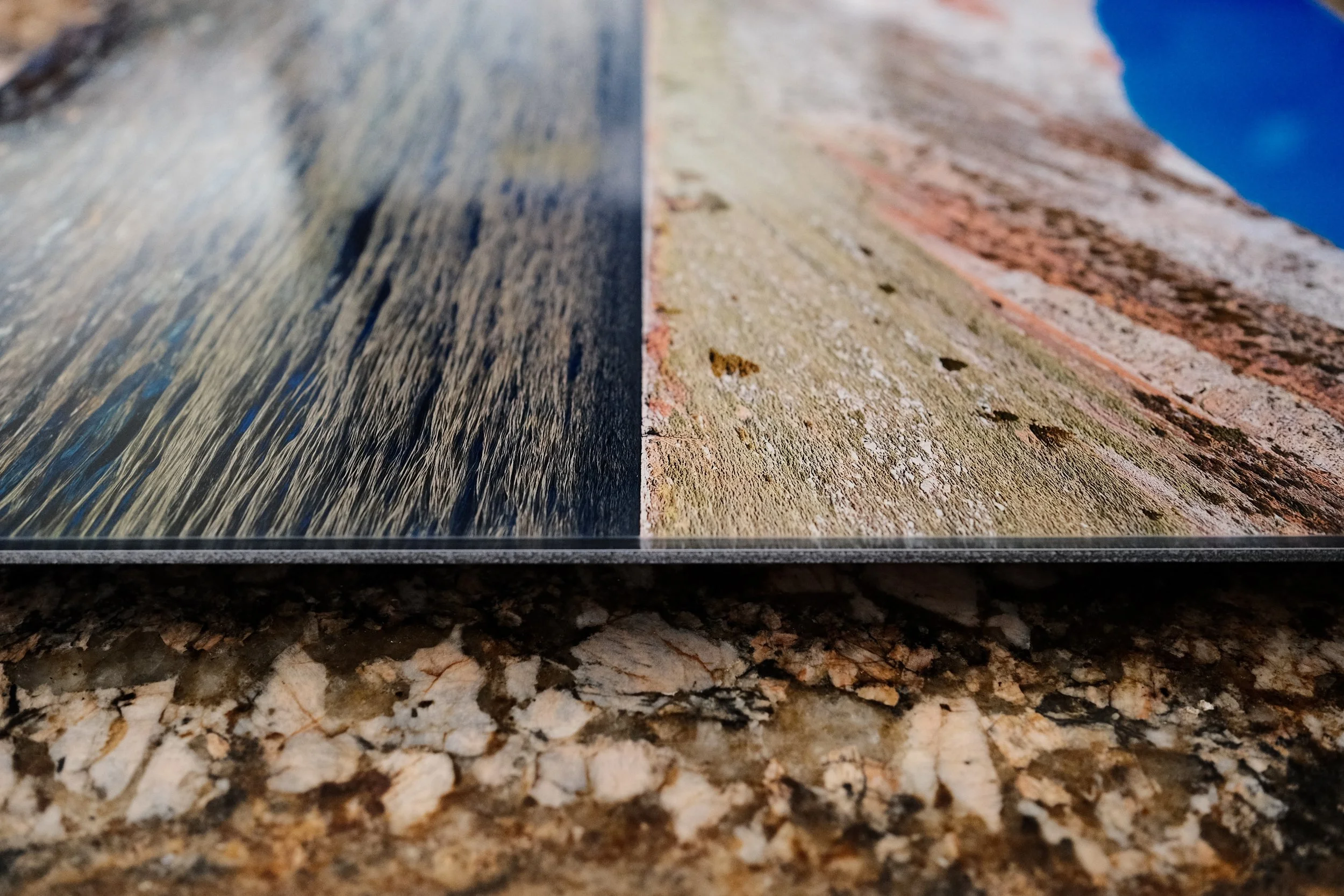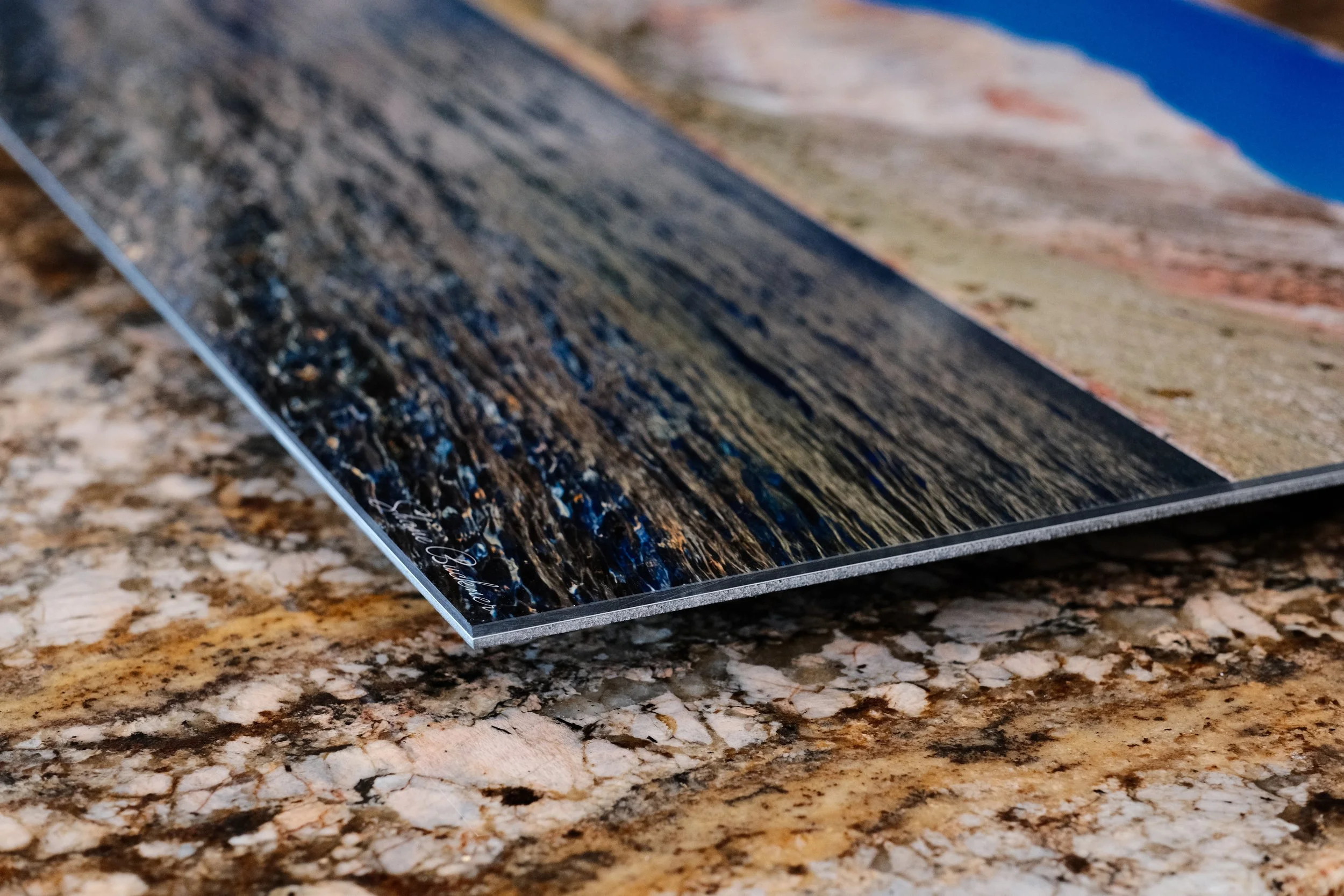Exploring Different Fine Art Print Materials
How Different Types of Print Media Transform Your Images
When it comes to showcasing your photography or artwork, choosing the right print medium can dramatically influence how your images are perceived. Acrylic, metal, and paper prints each have unique characteristics that can enhance certain aspects of an image, from colors and textures to depth and vibrancy. Here's a closer look at how these popular print media differ and what they bring to the table.
Acrylic Prints: Vibrancy and Depth
Acrylic prints are known for their eye-catching vibrancy and depth. Images are printed onto high-quality photo paper and then mounted beneath a sheet of clear acrylic. This process enhances colors, making them pop with vivid intensity. The acrylic layer adds a three-dimensional effect, creating the illusion of depth that makes the image appear almost lifelike.
Acrylic prints are particularly well-suited for:
Landscape photography: The vibrant greens, blues, and other natural tones are amplified.
Abstract art: The glossy finish emphasizes bold colors and intricate details.
Modern interiors: The sleek, polished look fits seamlessly with contemporary decor.
However, keep in mind that acrylic prints can be more expensive and are prone to glare if displayed in brightly lit areas.
Metal Prints: Sleek and Durable
Metal prints are created by infusing images directly onto aluminum sheets, resulting in a sleek, modern aesthetic. They are highly durable, resistant to scratches, water, and UV rays, making them an excellent choice for high-traffic areas or outdoor displays.
Metal prints offer:
Rich contrast: Dark tones and blacks appear deep and dramatic.
A modern aesthetic: The metallic finish complements minimalist or industrial-style spaces.
Longevity: These prints are fade-resistant, ensuring your image remains vibrant for years.
The unique surface of metal prints can also give images a slight reflective sheen, adding a dynamic element when viewed from different angles. However, this reflective quality might not suit all types of artwork or photography.
Paper Prints: Timeless Versatility
Paper prints are the most traditional and versatile option. Available in a variety of finishes, such as matte, glossy, and fine art textures, paper prints can adapt to different artistic styles and preferences.
Advantages of paper prints include:
Accessibility: They’re generally more affordable than acrylic or metal prints.
Customizability: A wide range of paper types allows for tailored results, from high-gloss for vibrant colors to matte for a soft, muted effect.
Framing options: Paper prints can be easily framed and matted to match any decor style.
Paper prints work well for:
Portrait photography: Matte or fine art paper reduces glare, providing a softer look.
Black-and-white images: The texture and tone of high-quality paper enhance monochromatic images.
Classic and traditional spaces: Framed paper prints offer a timeless appeal.
Choosing the Right Medium for Your Image
The best print medium for your image depends on several factors, including the subject matter, intended display location, and personal aesthetic preferences. Here are a few tips to guide your decision:
For bold, vibrant images that demand attention, acrylic prints are ideal.
For durability and a contemporary vibe, metal prints are a great choice.
For a classic, versatile option that suits any style, paper prints are unbeatable.
Conclusion
Each print medium has its strengths, and the right choice can elevate your image from a simple photograph to a stunning piece of art. Whether you’re drawn to the depth of acrylic, the durability of metal, or the timelessness of paper, selecting the right medium ensures your work makes the impact it deserves. Explore your options, experiment with different finishes, and let your creativity shine!







